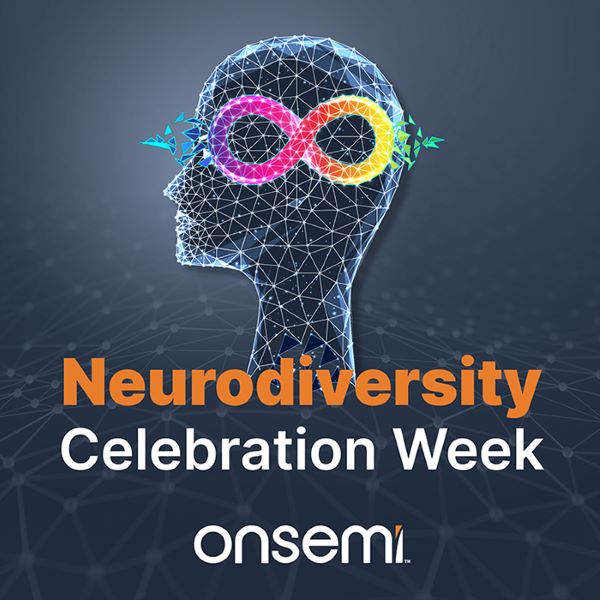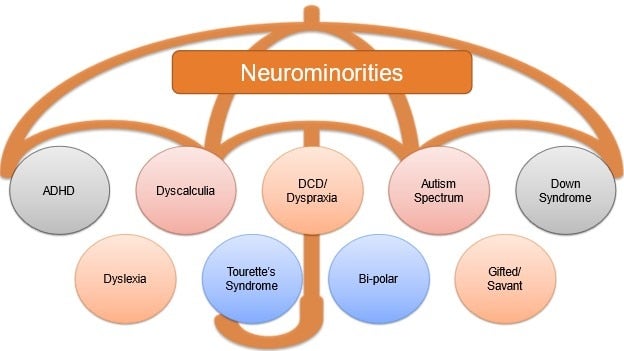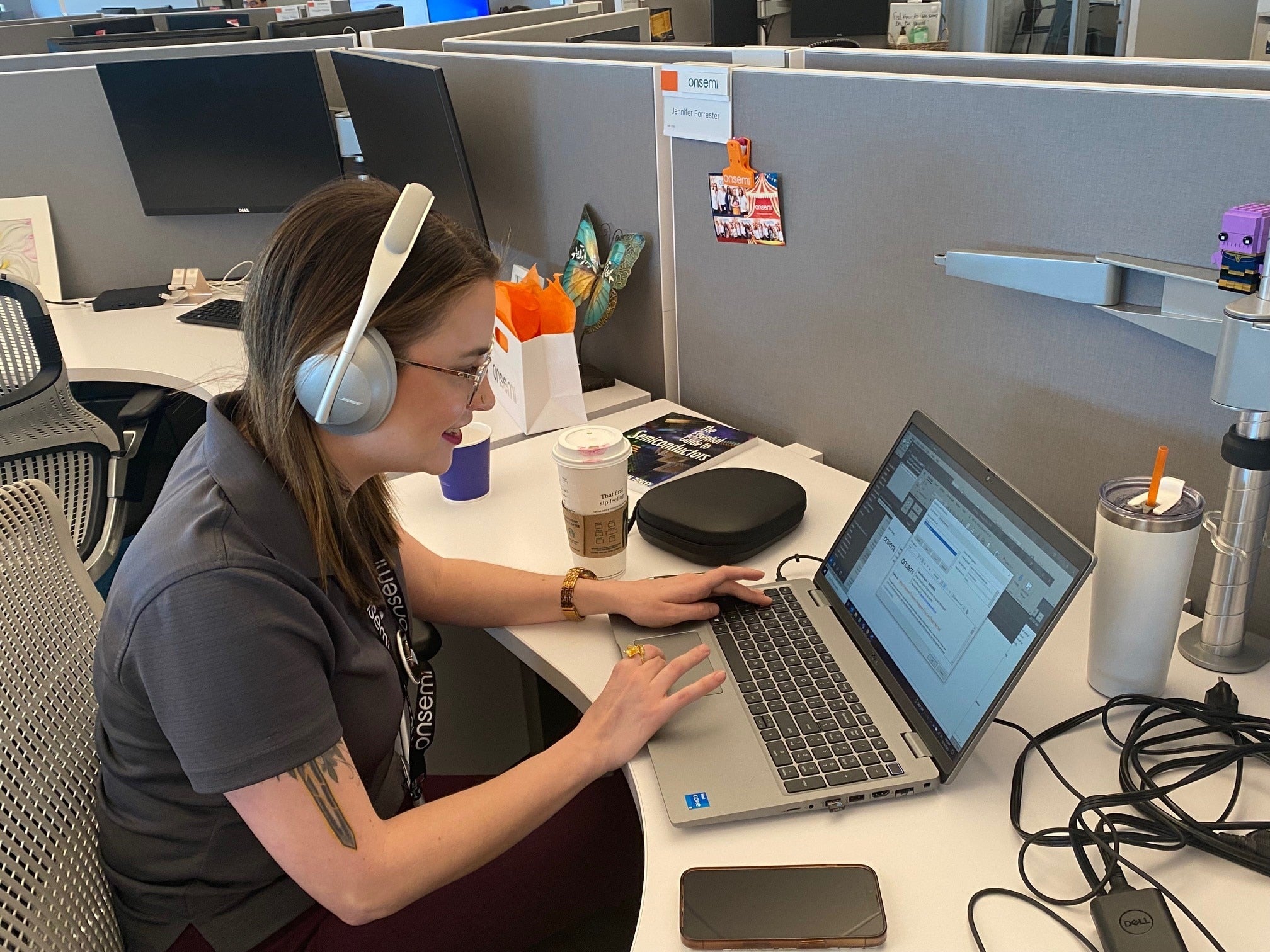Neurodiversity: Changing the Narrative
三月 16, 2023
Share:

What is neurodiversity?
Well, it’s a word you likely haven’t heard that often, at least not in an office setting. Neurodiversity is defined as “The range of differences in individual brain function and behavioral traits, regarded as part of normal variation in the human population…,” which is a scientific way to say that roughly 15% to 20% of the world's population, according to the website of the National Cancer Institute (https://www.cancer.gov), experiences and interacts with the world around them in many different ways. There is no one ‘right’ way of thinking, learning or behaving, and differences are not viewed as deficits.
Hi, I’m Jennifer Bain and I’m neurodiverse. I’m also a public speaker, the owner of a theater company and best known as your orientation facilitator at onsemi. During Neurodiversity Celebration Week (March 13-19), I’m here to change the narrative by telling you about the strengths, challenges and quirks of living a neurodiverse life. This week is a global initiative that challenges stereotypes and misconceptions about neurological differences. It aims to transform how neurodiverse individuals are perceived while helping to create a more inclusive and equitable culture.

I was diagnosed with two neurodiverse disabilities in 2020, in the middle of the pandemic. I was 28 at the time and running myself headfirst into burnout, feeling out of place and alienated by everyone around me. It was like I spoke a different language, even though I thought I was doing everything right. When I finally received my diagnosis, it was the first time in my life that I felt truly seen, and I finally had the answers to the questions I had been searching for. Now, almost three years later, I’ve committed to both understanding myself more and helping educate others on what it means to be a neurodivergent person living in today’s world.
You may have heard that diagnoses of individuals with attention deficit hyperactivity disorder (ADHD), autism spectrum disorder (ASD) and other neuro minority conditions are on the rise. Many people don’t have an understanding beyond common stereotypes. There are many challenges around understanding these disabilities, and we must recognize our own biases and work to dismantle them by becoming inclusive and allowing neurodiverse individuals to tap into their potential.

It can help to think of neurodivergence as two different computer operating systems. Yes, you can run Microsoft software on an Apple MacBook, but that’s after adjustments are made so it can run on a different operating system. A neurodivergent person takes the data of the world and processes it in many different pathways. For example, I have a verbal processing disorder that is connected to my neurological disabilities. I physically process what I hear differently than others, which results in symptoms like those of someone who is Deaf or Hard of Hearing. The different pathways in our brains can also cause misunderstandings by filtering out social meanings or connotations.
Neurodivergent Conditions
With an estimated 15% to 20% of people living with neurodivergent conditions, you likely work alongside someone who is neurodiverse. Here are a few things to help you begin to understand what your colleague may be experiencing and why:
- Sensory issues relate to experiencing and processing information from the senses.
- Things such as overhead lighting, the texture of fabric, or food just scratch the surface of the different sensory issues experienced by neurodivergent people. Your neurodiverse peers experience everyday life in a variety of different ways.

- Stimming for the neurodivergent is a critical part of self-regulation.
- Have you ever seen someone flipping a pen, bouncing a knee, flapping their hands, or twirling their hair? That’s stimming, something everyone does and needs. For some neurodivergent brains, stimming externally is necessary for emotional and physical well-being.
- People who are neurodivergent often feel that they need to hide or decrease their self-stimulatory behavior, as it often creates an undesirable response from those who do not understand the reason behind it.
- Don’t let the masks fool you; socializing can be exhausting.
- You were probably told at some point that honest people have strong eye contact and that anyone who doesn’t look you in the eye is ‘untrustworthy’ or ‘shifty’. For a neurodivergent person, eye contact can be experienced as physical pain.
- Maintaining eye contact is part of masking and can require immense effort and energy.
- You were probably told at some point that honest people have strong eye contact and that anyone who doesn’t look you in the eye is ‘untrustworthy’ or ‘shifty’. For a neurodivergent person, eye contact can be experienced as physical pain.
- Managing neurodivergent employees comes with adjustments to your perceptions of what disabilities are and how to accommodate them.
- While there are many aspects of neurodiversity that people consider as ‘superpowers’, having a neurodivergent brain is a disability. There are accessible accommodations such as flexible schedules, clear and complete written instructions for projects and grace for social misunderstandings.
Neurodiversity is a part of the human experience. Different doesn’t mean wrong, and the community needs understanding. Neurodivergent people are creative, out-of-the-box thinkers and dreamers who can thrive when supported and understood by our companies. Expanding understanding helps all of us perform better. We strongly encourage you to get curious by diving into these resources and celebrating all the ways your colleagues process the world!